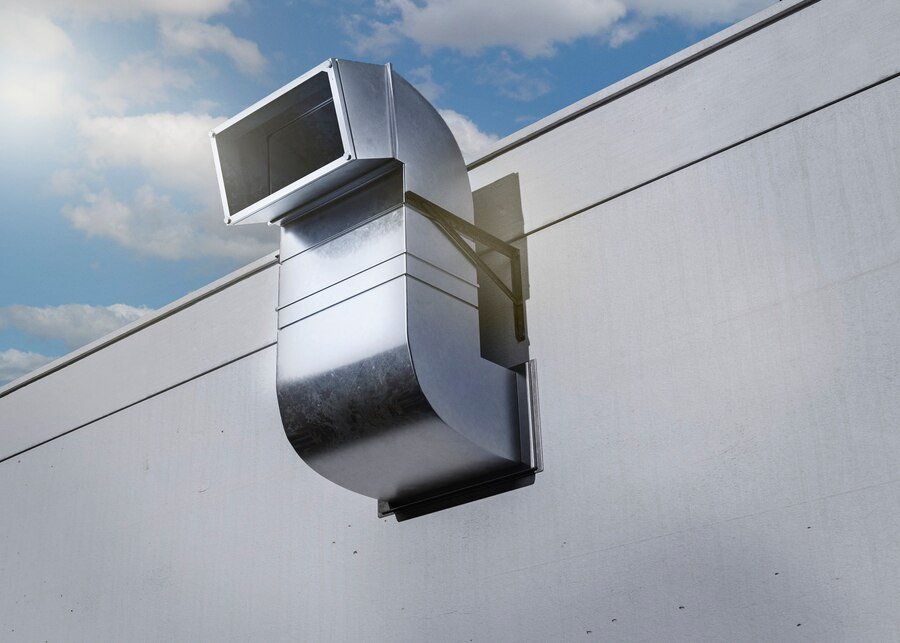The Importance of Roof Ventilation in Florida’s Climate

Florida’s hot, humid climate presents unique challenges for homeowners, particularly when it comes to maintaining a healthy and efficient roofing system. One key component that is often overlooked is roof ventilation. Proper ventilation helps regulate temperatures, prevent moisture buildup, and extend the lifespan of your roof. Partnering with a trusted roofing contractor in Florida ensures that your ventilation system works efficiently to protect your home.
This blog will explain why roof ventilation is essential, how it benefits Florida homes, and what homeowners need to know to keep their roofs functioning optimally.
What is Roof Ventilation and How Does it Work?
Roof ventilation is a system of intake and exhaust vents that allow consistent airflow in and out of your attic space. By balancing air circulation, it prevents extreme heat buildup and moisture retention that can damage roofing materials.
In simple terms, a properly ventilated roof allows hot, humid air to escape while drawing in cooler, fresh air. This airflow helps regulate temperatures, protect the roof structure, and improve overall energy efficiency.
Why Roof Ventilation is Essential in Florida’s Climate
1. Reduces Heat Buildup
Florida’s intense heat can cause attics to reach extreme temperatures, which can radiate into the living areas below. Proper roof ventilation helps release this trapped heat, keeping the attic cooler and reducing strain on air conditioning systems.
For homeowners, this translates to better energy efficiency and lower utility bills.
2. Prevents Moisture and Mold Growth
Humidity is a year-round concern in Florida, and inadequate ventilation can trap moisture inside attics. When warm air meets cooler surfaces, condensation forms, creating an environment for mold and mildew to thrive.
Over time, this moisture can damage insulation, weaken wooden structures, and pose health risks. Effective roof ventilation minimizes these issues by ensuring proper airflow.
3. Extends Roof Lifespan
Excessive heat and trapped moisture accelerate roof deterioration, particularly for materials like shingles. Poor ventilation can cause shingles to curl, warp, or crack prematurely.
By improving airflow, ventilation systems help maintain stable attic temperatures, reducing the wear and tear on roofing materials and extending the roof’s lifespan.
4. Prevents Ice Dams During Winter
Although Florida rarely experiences freezing temperatures, ice dams can occur in certain northern parts of the state. Roof ventilation helps balance attic temperatures, preventing uneven melting and refreezing of ice that can cause roof leaks.
How Does Roof Ventilation Improve Energy Efficiency?
In Florida’s warm climate, air conditioners work overtime to keep homes cool. When attics trap heat, cooling systems have to work even harder, leading to higher energy bills. Roof ventilation reduces heat buildup, ensuring that attics stay cooler.
This natural airflow allows homeowners to:
- Reduce reliance on air conditioning.
- Lower energy consumption and utility costs.
- Improve overall indoor comfort.
Proper ventilation not only protects your roof but also enhances energy efficiency, making it a critical feature for Florida homes.
Common Types of Roof Ventilation Systems
There are two main types of roof ventilation systems:
1. Ridge and Soffit Vents
Ridge vents are installed along the peak of the roof, while soffit vents are placed under the eaves. Together, they allow hot air to escape through the ridge while drawing cooler air through the soffits.
2. Gable Vents
Gable vents are positioned on the exterior walls of the attic, allowing cross-ventilation between opposing vents. These are effective for homes with gable-style roofs.
3. Turbine Vents
Turbine vents use wind power to pull air from the attic, promoting continuous airflow. They are an energy-efficient solution for maintaining proper ventilation.
4. Powered Ventilation Systems
Electric or solar-powered ventilation systems actively move air in and out of the attic. These systems are ideal for homes with limited natural ventilation.
Signs of Poor Roof Ventilation
Identifying ventilation problems early can help homeowners avoid costly repairs. Common signs include:
- Excessive heat in the attic.
- Condensation or moisture on attic surfaces.
- Mold or mildew growth.
- Curled, warped, or cracked shingles.
- Unusually high energy bills during summer.
If you notice any of these issues, consult a professional roofing contractor in Florida to assess and improve your ventilation system.
The Role of Professional Roofing Services in Florida
Roof ventilation requires proper planning, installation, and maintenance to function effectively. Partnering with an experienced roofing contractor in Florida ensures that your home benefits from a well-designed ventilation system tailored to local weather conditions.
Benefits of Professional Roofing Services Include:
- Expert assessment of your attic and ventilation needs.
- Proper installation of vents for optimal airflow.
- Maintenance to address any potential issues early.
- Recommendations for energy-efficient solutions.
Professional roofers understand Florida’s climate challenges and offer solutions that protect your investment while improving home comfort.
Conclusion
Roof ventilation is a critical yet often overlooked component of maintaining a healthy, energy-efficient home in Florida’s hot and humid climate. Proper ventilation regulates attic temperatures, prevents moisture-related damage, and reduces energy costs, making it essential for protecting your roof and improving indoor comfort.
If you’re experiencing ventilation issues or need an upgrade, working with a trusted roofing contractor in Florida ensures your roof system performs optimally year-round. Don’t wait for ventilation problems to cause costly repairs—take action today and safeguard your home with professional roofing services.
Frequently Asked Questions About Roof Ventilation
How does roof ventilation help with humidity?
Roof ventilation regulates airflow, preventing moisture buildup caused by Florida’s high humidity. This reduces the risk of mold, mildew, and structural damage.
What happens if my roof lacks proper ventilation?
Poor ventilation can lead to heat buildup, moisture retention, mold growth, and premature roof deterioration, resulting in costly repairs.
How do I know if my roof has adequate ventilation?
Signs of adequate ventilation include a cool attic, stable roof materials, and no visible mold or moisture. A professional inspection can confirm your system’s effectiveness.
Can roof ventilation lower energy bills?
Yes, proper ventilation reduces attic temperatures, easing the load on air conditioning systems and lowering energy costs.


